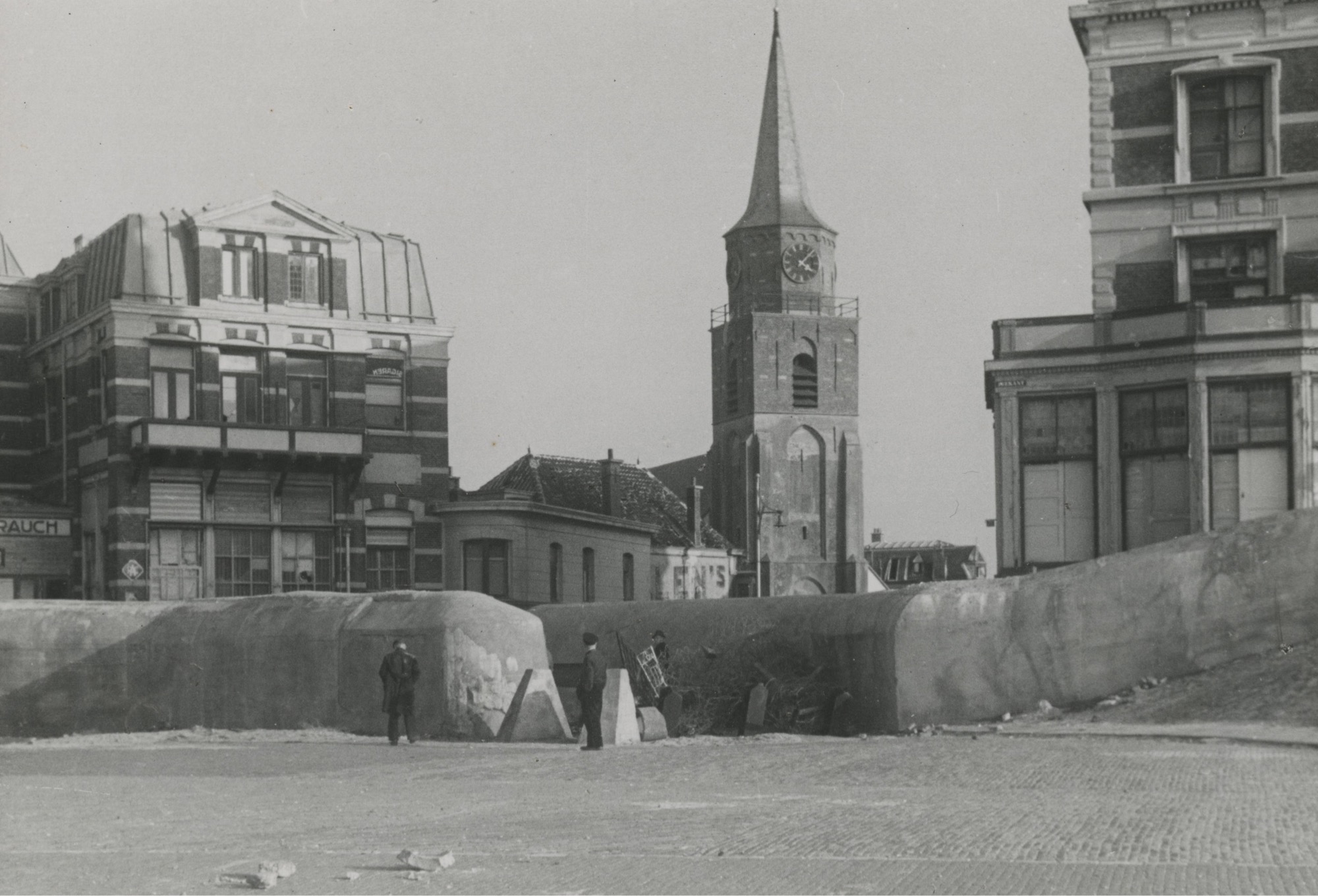The Atlantic Wall
From the summer of 1941, Hitler moved ever more troops to fight the Soviet Union on the Eastern Front. At the same time, however, Nazi Germany was expecting a sea-borne Allied invasion in the west. The solution to the dilemma was the construction of the Atlantic Wall between 1942 and 1945. The ‘Wall’ was actually a series of concrete bunkers, manmade barriers and natural obstacles like cliffs and rocks, stretching along five thousand kilometres of North Sea and Atlantic coast from northern Norway to the Spanish border. These coastal defences turned the Nazi-occupied west of Europe into a virtually impregnable fortress that could be held by relatively few troops.
The construction of the Atlantic Wall
Building the wall was not progressing fast enough and Hitler was concerned that the open artilleries were too vulnerable for airstrikes. He chose therefore to build bunkers around them with reinforced concrete walls of at least 2 metres thick. This was called 'Ständiger Ausbau (St)'. Then, on August 25th 1942, General-Field Marshal Gerd Von Rundstedt, commander of all German troops on the western front at the time, ordered the West-European coast be transformed into an impregnable fortification. This, order number 14, was the birth of the Atlantic Wall.
Some 15,000 heavy bunkers along the Dutch, Belgian and French coast should have been built by May 1st 1943, but due to insufficient manpower, materials and fuel only 6,000 were completed. Of this number 510 were completed in The Netherlands, instead of the 2,000 that were planned.
In 1943, Hitler appointed Field Marshal Erwin Rommel as inspector of the Atlantic Wall. His strategy was to destroy attackers at sea and only to give battle on the beaches if driven to it as a last resort. In accordance with this, Rommel began in early 1944 with the installation of numerous hindrances along the water's edge, including masses of large poles buried so they stuck out of the sand at an angle connected with steel wire and combined with landmines, later called 'Rommel-asparagus'. Furthermore, he fortified the defences on the land-facing side by flooding low-lying areas and installing minefields, levees and trenches, anti-tank ditches and other obstructions. The compilation of the Atlantic Wall continued right up until the end of the war, even though it had become clear much earlier that there was no longer any reason to do so.
The Atlantic Wall measures 6200 kilometres in length (including the coastline of the British Channel Islands which Hitler captured in 1940).
In the end, the full 2,000 fortifications were realised, along with tens of thousands of lighter bunkers and brickwork buildings. Moreover, likely vulnerabilities for enemy aviation landings and tank offensives on the land-facing side of the coast were further fortified with more anti-tank ditches, anti-tank walls and other obstacles.

